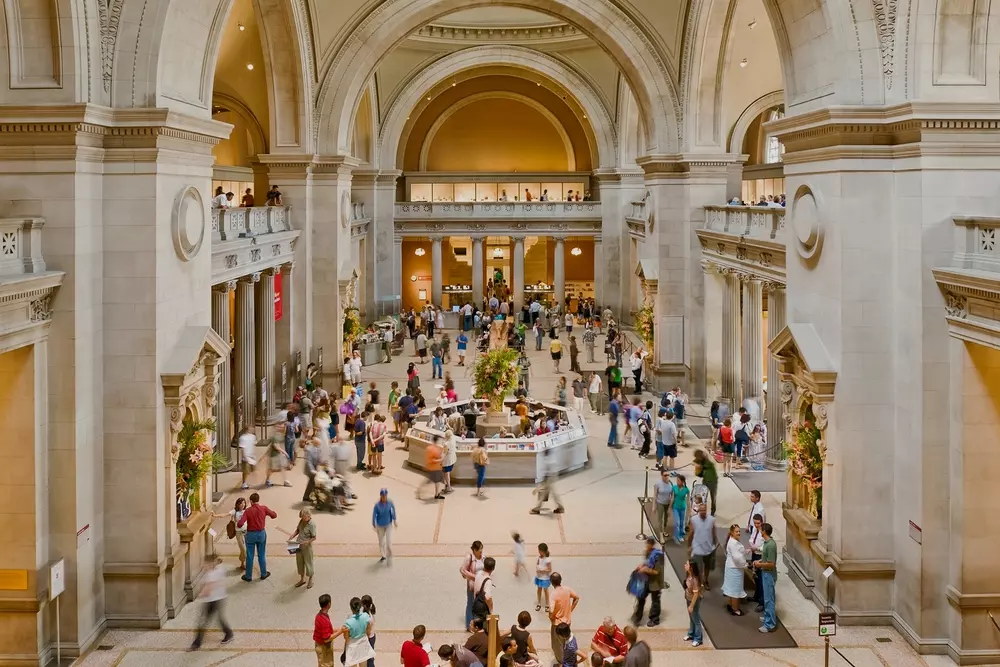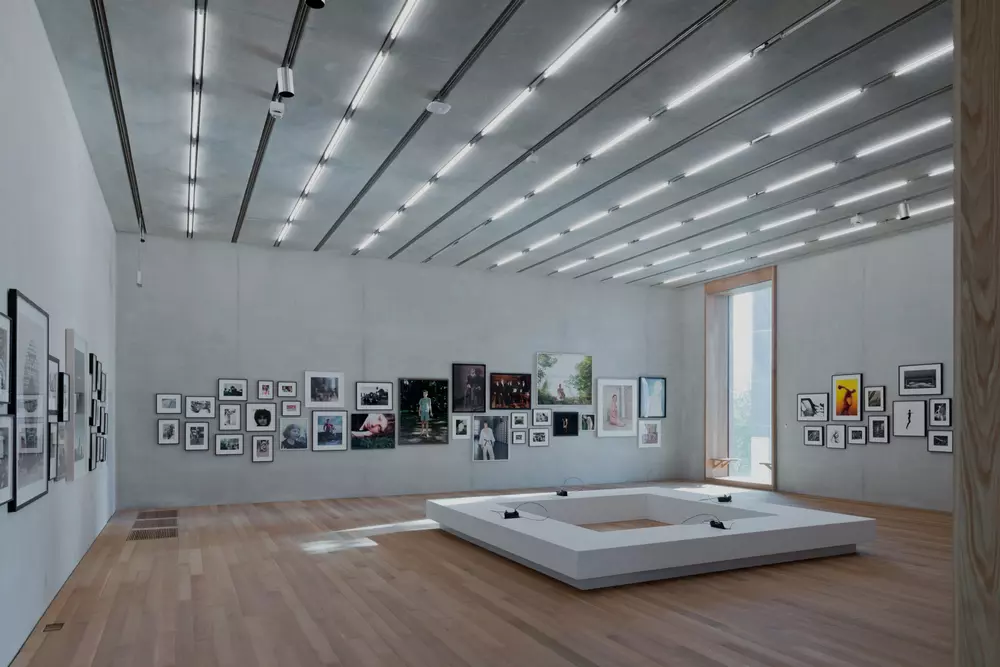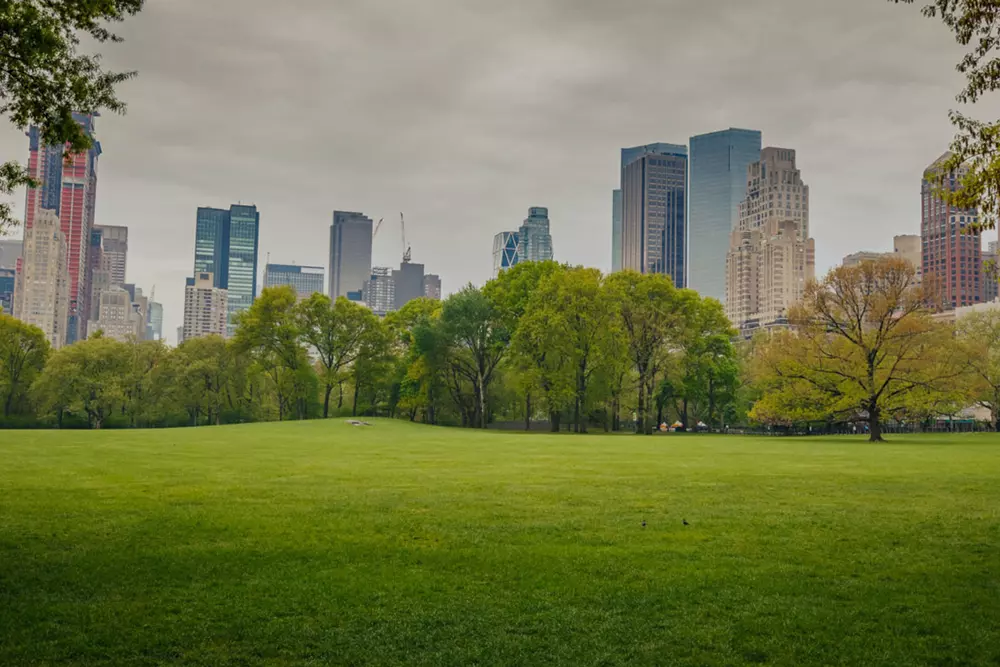The New York Public Library is more than just a large repository of books. It houses engineering marvels, treasures of an entire nation, and the kindest initiatives. It is one of the world's largest libraries and a place that is a must-visit if you are a person who loves and wants to read.
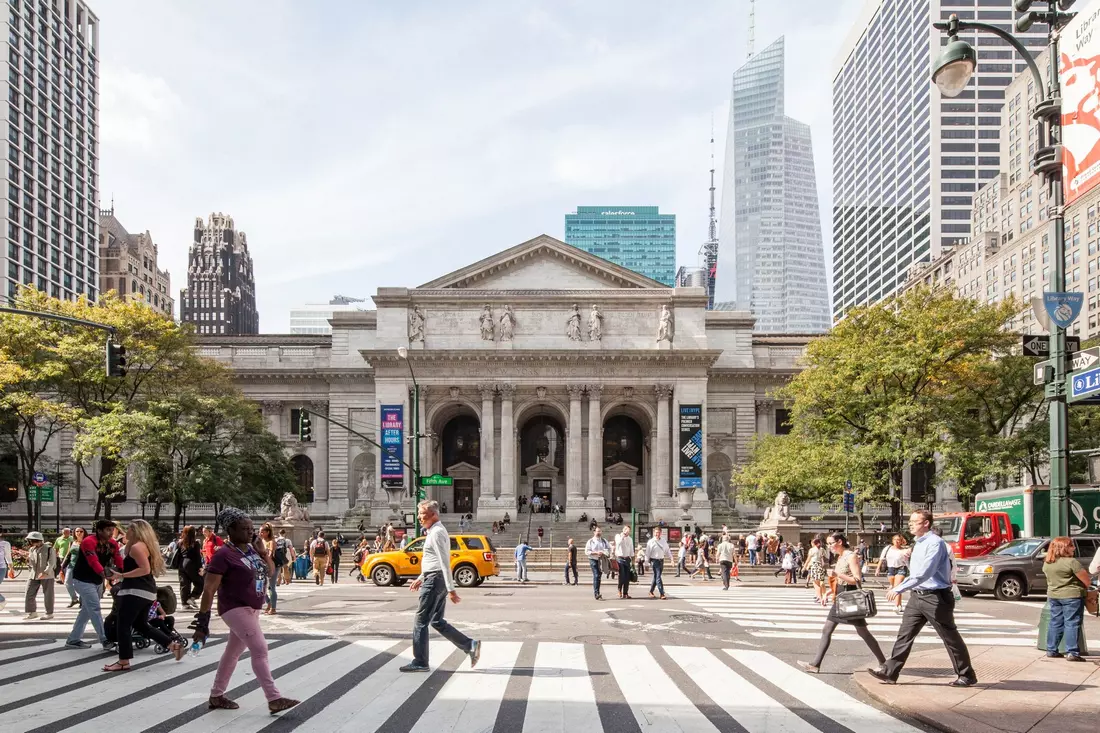
New York Public Library: The Story of its Creation
Few know, but the Public Library is not a government structure. It originated as a private initiative of philanthropist and former New York governor Samuel Tilden. Being a wealthy man, he bequeathed almost $2.5 million of his own savings to establish and maintain a free public library in New York (this was in 1886, and the amount at that time was simply astronomical).
At that time, the city already had two libraries: Astor's reference library and the Lenox library, which could only be used by scholars. None of them met the parameters set by Tilden. In his understanding, a library should provide books to all who wish, have a huge assortment, and meet the needs of all layers of society. Therefore, neither library received any money.
When both libraries began to falter due to financial difficulties, the executor of Tilden's estate proposed a change in format for them. In 1985, based on the two "wrong" libraries, the dream network was created — The New York Public Library, Astor, Lenox, and Tilden Foundations.

The Iconic Building
Since 1901, the library has been steadily expanding. Several regional branches joined it, and patrons began donating large sums of money for book acquisitions. But the larger the network became, the less convenient it was for ordinary readers — they had to move from building to building in search of the desired edition.
It was then decided to erect a single main building for the Public Library, with all previous ones designated for storage or branches. The project was massive — the building was to be constructed in the heart of the city, on Fifth Avenue Hill. Indeed, the structure itself was the largest marble building in the country at the time.
In May 1911, the opening of the new main building of the New York Public Library took place. Construction took 9 years and cost over $9 million. Seven out of 8 floors were occupied by the book depository, with a huge reading room on the top floor.
The ceiling height there was nearly 16 meters. The new building featured 120 km of bookshelves, serviced by an entire team of workers and a sorting machine — a requested book could be obtained in just 6-8 minutes of waiting. A true revolution for those times.

Lion's Intrigues
At the entrance of the main building stand two lion figures, surrounded by a plethora of stories, mostly revolving around their names. Initially, the two lions symbolized the two old libraries, sacrificing their individual gains and uniting for a greater cause, named Leo Lenox and Leo Astor. Later, Americans desired romance and crafted a new legend: according to it, the lions were called Lady Astor and Lord Lenox, symbolizing the triumph of rational love. The fact that both lions were males seemed to bother no one.
In 1930, the lions were named Patience and Fortitude — in honor of the two qualities needed to endure the then-approaching Great Depression. They are known by these names to this day.
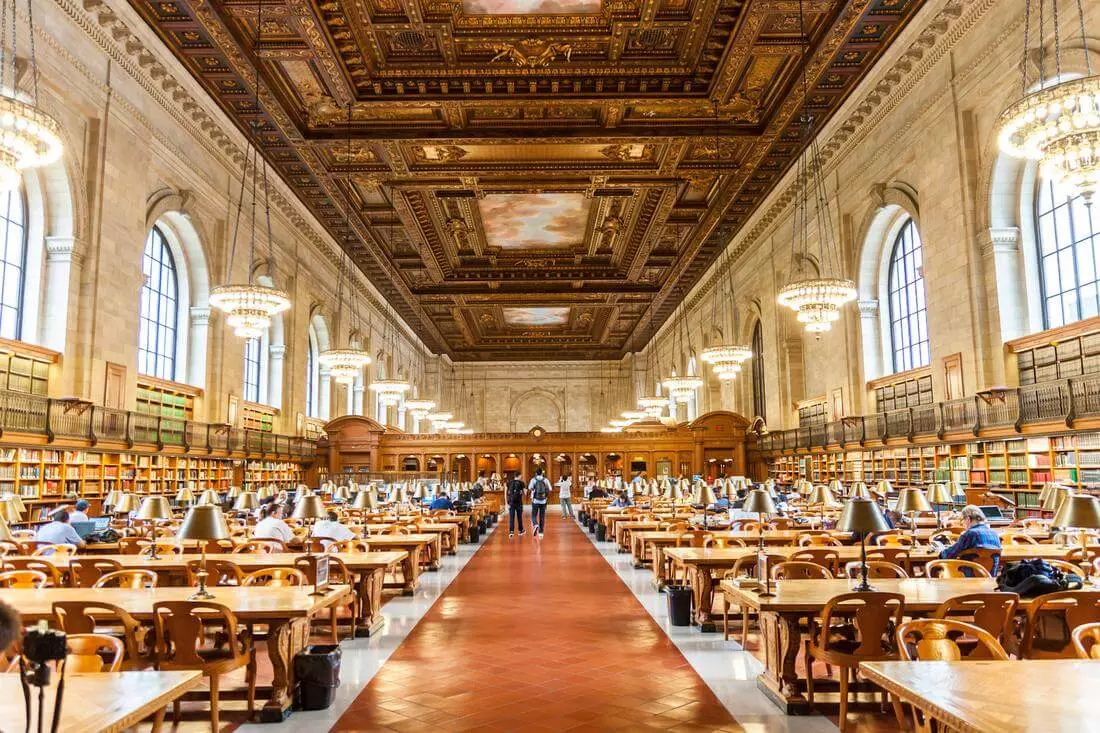
The Library Today
In 2010, the New York Public Library underwent a massive equipment replacement. Now, there are far fewer live people working there, but the technology is undoubtedly the most advanced. For example, the sorting machine in the library's warehouse on Long Island occupies an area equivalent to 2/3 of a football field and sorts 125 books per minute. High-tech machines also monitor the temperature and humidity in the premises, allowing even particularly fragile ancient manuscripts to be preserved in ideal condition.
The library building houses many treasures — for instance, a copy of the Bible from the earliest printing presses of Johannes Gutenberg. Every visitor can view them in a special room.
If there is a library in the world capable of occupying a whole day, if not two, then it's definitely here. In addition to books themselves, you'll encounter a stunningly beautiful and expansive building and a whole array of social and cultural projects. There's no boredom or book dust — only progress.

Experiencing all of this firsthand is much easier than it seems. American Butler specialists will guide you on how to visit the library and many other attractions in New York.
We'll definitely make your trip much more enjoyable and informative, giving you plenty to share with friends and family afterward. And we'll only be happier for it.


























